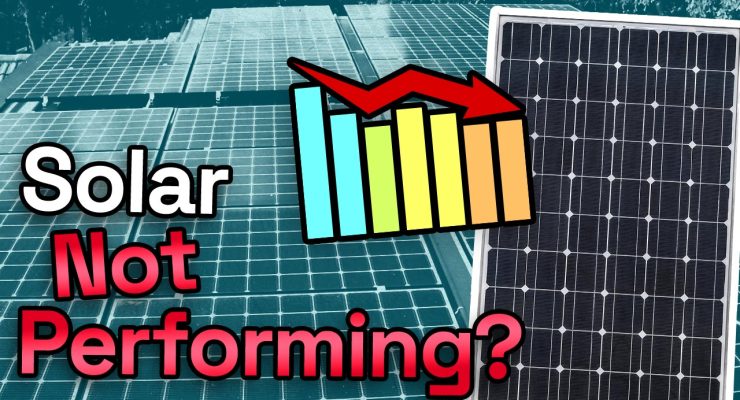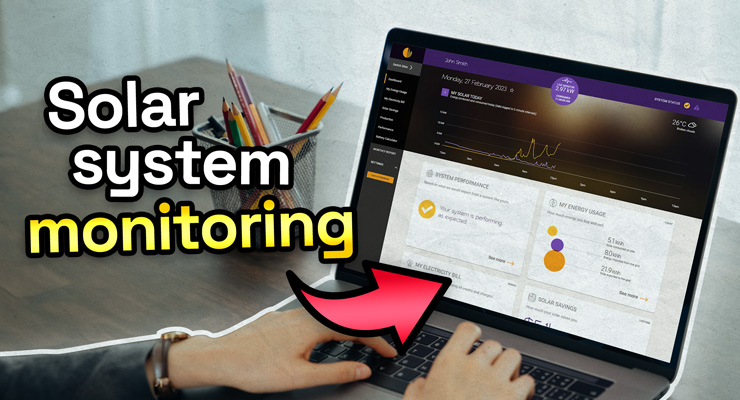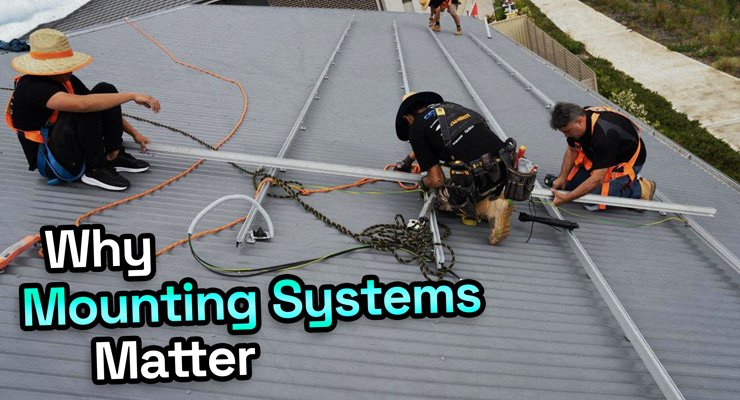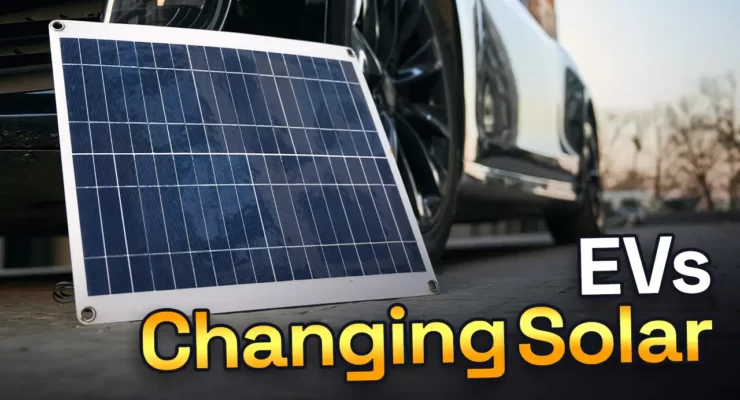
Fast read
The number of panels installed may exceed the inverter's capacity since solar panel systems are sometimes created to optimise the rebates offered to clients. This is a standard industrial procedure, and there shouldn't be any issues if the inverter is sized correctly. However, if it is sized incorrectly, your solar system may not perform at its best.
Solar panels are evaluated based on how much energy they can produce under ideal circumstances. Still, in practice, their output may be lower due to things like solar intensity and cell efficiency. Therefore, when sizing the inverter, it is taken into mind that the production of a solar panel system would typically be lower than the rated capacity of the panels.
Working with a qualified local supplier or installer is important to ensure that your solar panel system is sized and installed correctly.
Why is my solar panel system not performing?
Many solar customers come across the same issue of asking why their solar panel system is not working properly. Many solar companies in Australia try to sell a solar system that maximises the rebate, which is currently linked with the solar panels when they sell you a system.
So solar companies want to sell you as many panels as possible because that also means there’s a maximum rebate coming towards the sale price, benefiting you and the company, as the purchase price will be lower.
In many cases, you might get 6.4 kilowatts worth of panels, being 16x 400W, but the inverter they have added to the solar system is only a 5 kilowatt inverter.
Customers often feel a little concerned when they learn that the solar inverter solution has had more kW of panels added, a practice known as “oversizing” in the industry.
They wonder if that means the inverter has to handle too much electricity and might overheat or other compatibility issues might arise, meaning your solar panels won’t work at their best.
Let me reassure you – a design like this is acceptable and is typical industry practice.
Why is this not an issue?
Every solar panel is slightly different in output as they are made of many other solar cells, and the efficiency of each cell varies.
During a flash test to confirm a solar panel’s rated capacity, let’s use a 400W panel as an example. The manufacturer exposes the panel to a thousand Watts of light intensity per square meter, flashing it for a fraction of a second to measure its actual output, ensuring it truly meets the rated 400W capacity. Then they measure the output, and in this sample, let’s say it measures 401.6W.
In many cases in many parts of Australia, we only get a light level of maybe 700, 800, or 850 Watts per square meter. This is actually not a bad number because in Southern Germany, for example, you might only have 450 to 500 Watts of light intensity per square meter.
So even if the panel is flash tested at 401.6W, that 400W rated panel in an actual generation will only reach more on a sunny day in Australia at 325W and NZ maybe 300W output and in Germany only a bit more 200W.
Therefore if a customer purchased 16 x 400 W panels, it creates a solar system size of 6.4 kW. The actual output of these panels is more likely to be around 5000 to 5100 Watts in the middle of a sunny day.

What capacity inverter do I require so my solar panels work properly?
Selecting the appropriate inverter for your solar system is a critical decision. A 5kW inverter is a solid choice, ensuring seamless operation without impacting your solar panels. Interestingly, solar design regulations allow for some flexibility, permitting an oversizing of up to one-third of the inverter’s capacity. In practical terms, this means that a 5kW inverter can handle a maximum of 6.6 kW of solar panels, while a 10 kW inverter can accommodate up to 13.33 kW of solar panels.
Envision a clear, cool, and sunny day with minimal dust in the air. During a brief 20-minute period in the middle of the day, your solar system is generating a robust 5.2 kW. But, here’s a little catch: the inverter loses the extra 200W generated during this time as it goes beyond its capacity. This phenomenon, known as “clipping,” is a rare occurrence but poses no harm to your inverter.
In the realm of solar setups, achieving the right equilibrium between inverter and panel capacity is paramount for optimal performance. Adhering to the prescribed oversizing limits ensures a smooth and efficient solar experience, allowing you to make the most of the available amount of sunlight. By maintaining this balance, you enhance the overall effectiveness and longevity of your solar power system.
Optimising your solar panel system
When figuring out why your solar panels might not be working as expected, a common practice called “oversizing” comes into play. Especially in places like Australia, solar companies use this strategy to maximise rebates by selling systems with more panels than the inverter can handle.
Flash testing, which involves exposing a panel to bright light for a fraction of a second, shows the actual output. In real situations, the output may be a bit lower than the labelled capacity due to things like changes in light intensity. For instance, if you have a 6.4 kW solar system with 16 x 400W panels, on a sunny day, the actual output might be around 5000 to 5100 Watts. This slight difference is normal and doesn’t mean there’s a problem with your system.
When choosing the right inverter, industry standards allow for oversizing, up to one-third of the inverter’s capacity. So, if you have a 5kW inverter, it can handle up to 6.6 kW of solar panels. Striking this balance ensures your system works well without causing issues to the inverter, even during moments of extra production known as “clipping.”
In summary, grasping the ins and outs of oversizing, variations in panel output, and picking the right-sized inverter are crucial for making sure your solar panel system stays effective and efficient. By following these practices, you make the most of the benefits of solar energy while addressing concerns about system performance. If you’re wondering why your solar panels might not be working perfectly, these industry practices could be part of the solution.


